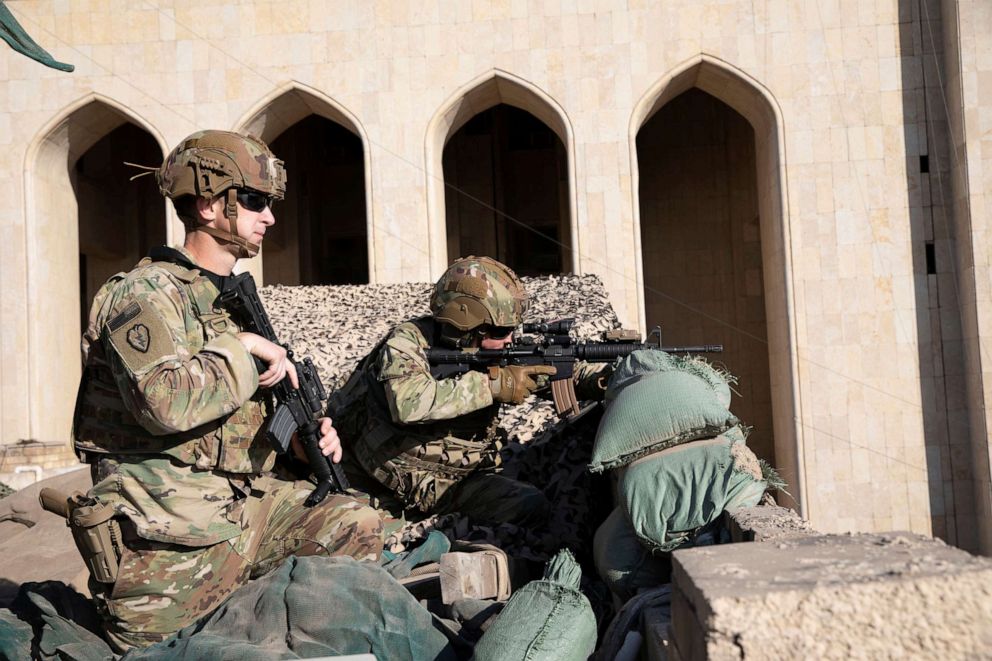US reducing troop size in Iraq to 3,000
The U.S. military will reduce the number of troops in Iraq from 5,200 to 3,000 in the month of September, according to the top U.S. general in the Middle East.
The first U.S. troop reduction in Iraq since 2016 is larger, and will be carried out in a much faster timeline, than had been reported just weeks ago.
"In recognition of the great progress the Iraqi forces have made and in consultation and coordination with the Government of Iraq and our coalition partners, the United States has decided to reduce our troop presence in Iraq from about 5,200 to 3,000 troops during the month of September," said Gen. Kenneth McKenzie in remarks Wednesday in Baghdad.
"This reduced footprint allows us to continue advising and assisting our Iraqi partners in rooting out the final remnants of ISIS in Iraq and ensuring its enduring defeat," said McKenzie, who was in Baghdad for the change of command of the leadership of the U.S.-led coalition against ISIS.
"This decision is due to our confidence in the Iraqi Security Forces' increased ability to operate independently."

The withdrawal of the 2,200 American troops is the first reduction of U.S. forces, sent to advise and assist Iraq in the fight against ISIS, since 2016 when troop levels rose to 5,200.
In 2016, President Donald Trump had campaigned to end "endless wars" and for the return of U.S. troops from Iraq and Afghanistan, but the reality of the security situations in those countries prevented any reductions in the number of troops until recently.
Earlier this year, the U.S. reduced the number of troops in Afghanistan to 8,600 as agreed to in a peace deal with the Taliban. Defense Secretary Mark Esper said in August that there would be a further reduction to under 5,000 by November.
The reduction of U.S. troop levels in Iraq had been anticipated all summer as U.S. military officials highlighted the Iraqi military's growing ability to carry out independent operations against the remnants of ISIS.
However, the troop reduction announced by McKenzie is larger and will be carried in a much faster timeline than what U.S. officials had indicated just a few weeks ago. At the time, it was reported that U.S. troop levels would be reduced by a third to 3,500 over a couple of months by the time of the U.S. election in November.
ABC News had reported that the process for the drawdown had already begun, but a U.S. official did not elaborate on how long it would take to complete.
Although officially at about 5,200 since late 2016, when U.S. training efforts to battle ISIS peaked, the number of U.S. troops was actually was a bit higher because of troop rotations and other factors.
In June, following a meeting with Iraqi Prime Minister Mustafa Al-Kadhimi in Baghdad, Gen. McKenzie told ABC News it appeared Iraq wanted to keep a U.S., NATO and coalition presence there long term.
McKenzie has said several times this summer it was possible the U.S. troop presence in Iraq could be reduced as the Iraqi military continued making progress. But he also said the size of any troop reduction would be a decision made by the White House.
No troop reduction announcement was made following Al-Khadimi's meeting with President Donald Trump at the White House in August, but Trump emphasized again that he favored an eventual full withdrawal.
"We were there, and now we're getting out," he told reporters. "We'll be leaving shortly."
Trump ordered a total U.S. troop withdrawal from Syria last fall during Turkey's invasion into northern Syria, but he was convinced to keep troops in eastern Syria to protect Kurdish oil fields from ISIS. About 500 U.S. troops remain, in a southern outpost close to the border with Jordan.





